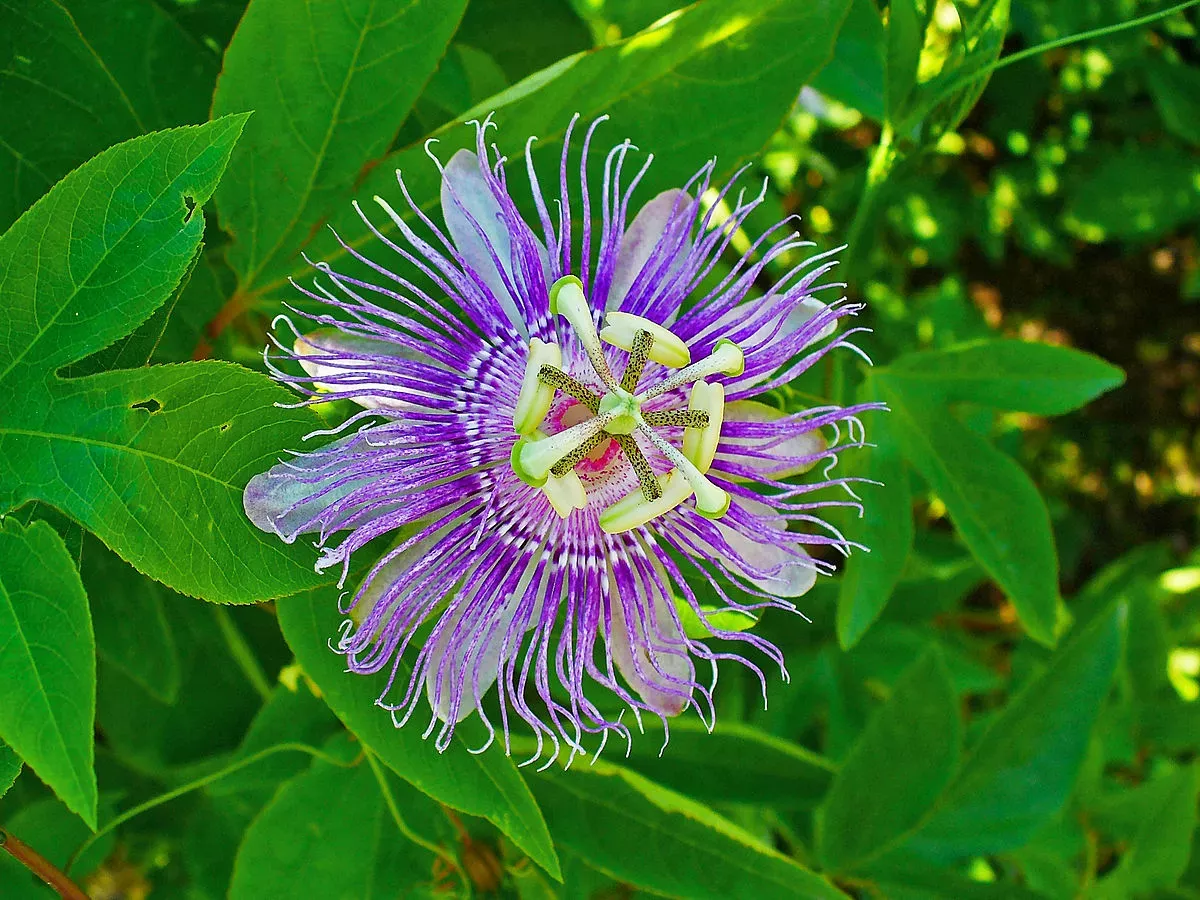Planting and Soil
Passiflora incarnata, commonly known as purple passionflower, is a beautiful and vigorous vine that can add a tropical touch to your garden. Here’s a comprehensive guide to caring for this enchanting plant:
Choosing the Right Location:
Sunlight: Passiflora incarnata thrives in full sun but can tolerate partial shade.
Soil: Well-drained soil is essential to prevent root rot. The ideal soil pH is slightly acidic to neutral.
Support: Provide a sturdy trellis, fence, or arbor for the vine to climb.
Purple passionflower – Passiflora incarnata Plants Kew Planting:
Timing: Plant in spring after the last frost.
Depth: Plant the vine at the same depth it was in its pot.
Watering: Water deeply after planting and keep the soil consistently moist but not soggy.
Growing and Maintenance
Watering:
Regular Watering: Water your passionflower regularly, especially during dry periods.
Avoid Overwatering: Overwatering can lead to root rot. Let the top inch of soil dry out between waterings.
Mulching: Mulching around the base of the plant can help retain moisture and suppress weeds.
Passiflora incarnata (Apricot Vine, Maypop, Passionflower, Passion Fertilizing:
Fertilizer: Apply a balanced liquid fertilizer every 4-6 weeks during the growing season.
Avoid Over-Fertilizing: Too much fertilizer can lead to excessive foliage growth and fewer flowers.
Pruning:
Pruning: Prune your passionflower in late winter or early spring to shape the vine and encourage new growth.
Removing Dead or Damaged Growth: Remove any dead, damaged, or diseased branches.
Get To Know Your Florida Plant – Passiflora incarnata, Passion Winter Protection:
Winter Hardiness: Passiflora incarnata is relatively hardy but may need protection in colder climates.
Mulching: Mulch the base of the plant with a thick layer of organic mulch to protect the roots from freezing.
Pest and Disease Control:
Common Pests: Watch for aphids, whiteflies, and spider mites.
Control Methods: Use insecticidal soap or neem oil to control pests.
Disease Prevention: Good air circulation and proper watering can help prevent fungal diseases.
Blooming and Fruiting
Blooming:
Bloom Time: Passiflora incarnata typically blooms in late spring or early summer.
Encouraging Blooms: Provide adequate sunlight, water, and fertilizer to promote abundant blooms.
Fruiting:
Fruit Production: If pollinated, the plant may produce edible fruit.
Harvesting: Harvest the fruit when it is ripe and soft.
Additional Tips
Training the Vine: Train the vine to climb the support structure to encourage better growth and flowering.
Container Gardening: Passiflora incarnata can be grown in containers, but it will require more frequent watering and fertilization.
Propagation: Propagate your passionflower by taking stem cuttings in spring or summer.
By following these care tips, you can enjoy the beauty of Passiflora incarnata in your garden for years to come.



